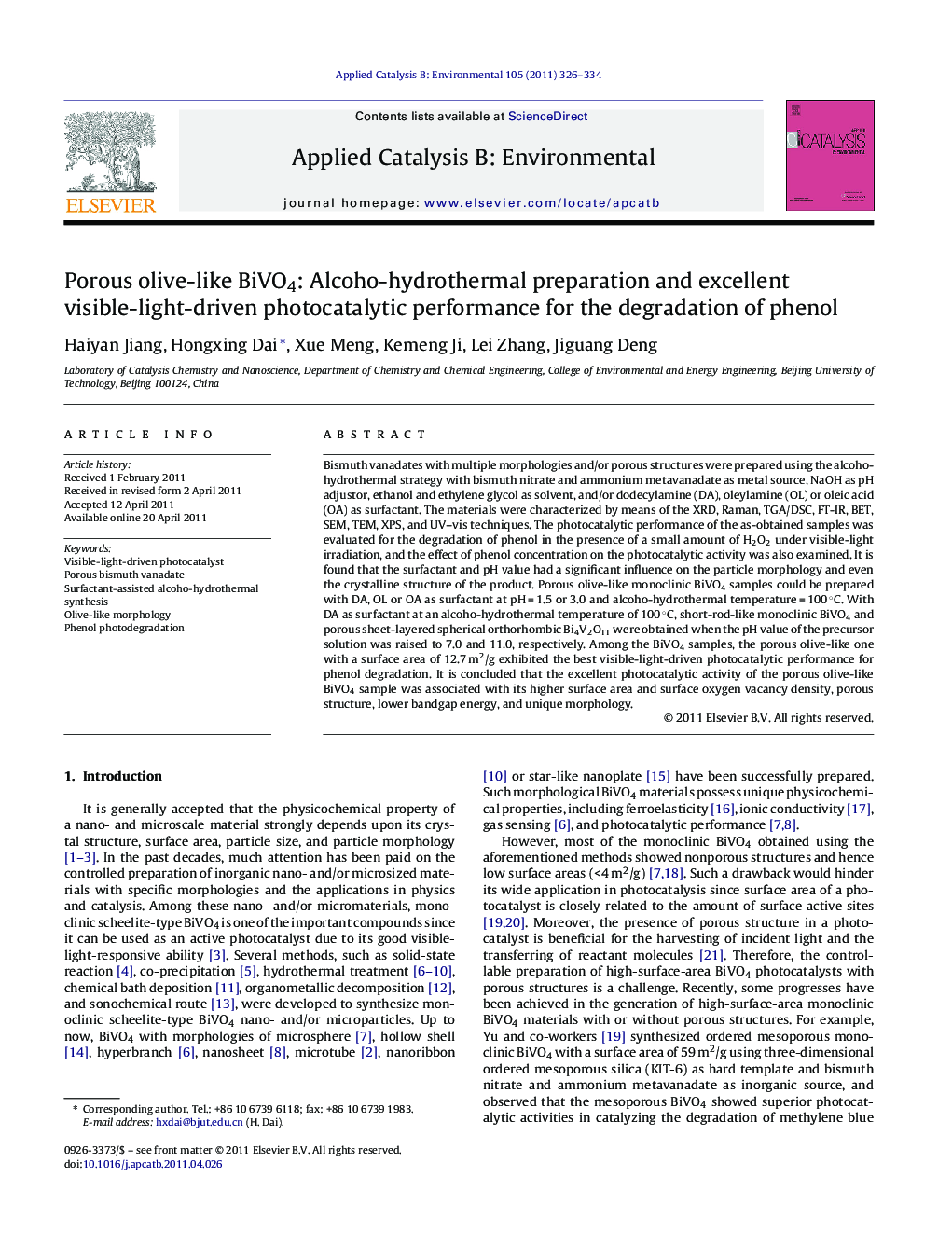| کد مقاله | کد نشریه | سال انتشار | مقاله انگلیسی | نسخه تمام متن |
|---|---|---|---|---|
| 46752 | 46447 | 2011 | 9 صفحه PDF | دانلود رایگان |

Bismuth vanadates with multiple morphologies and/or porous structures were prepared using the alcoho-hydrothermal strategy with bismuth nitrate and ammonium metavanadate as metal source, NaOH as pH adjustor, ethanol and ethylene glycol as solvent, and/or dodecylamine (DA), oleylamine (OL) or oleic acid (OA) as surfactant. The materials were characterized by means of the XRD, Raman, TGA/DSC, FT-IR, BET, SEM, TEM, XPS, and UV–vis techniques. The photocatalytic performance of the as-obtained samples was evaluated for the degradation of phenol in the presence of a small amount of H2O2 under visible-light irradiation, and the effect of phenol concentration on the photocatalytic activity was also examined. It is found that the surfactant and pH value had a significant influence on the particle morphology and even the crystalline structure of the product. Porous olive-like monoclinic BiVO4 samples could be prepared with DA, OL or OA as surfactant at pH = 1.5 or 3.0 and alcoho-hydrothermal temperature = 100 °C. With DA as surfactant at an alcoho-hydrothermal temperature of 100 °C, short-rod-like monoclinic BiVO4 and porous sheet-layered spherical orthorhombic Bi4V2O11 were obtained when the pH value of the precursor solution was raised to 7.0 and 11.0, respectively. Among the BiVO4 samples, the porous olive-like one with a surface area of 12.7 m2/g exhibited the best visible-light-driven photocatalytic performance for phenol degradation. It is concluded that the excellent photocatalytic activity of the porous olive-like BiVO4 sample was associated with its higher surface area and surface oxygen vacancy density, porous structure, lower bandgap energy, and unique morphology.
Monoclinic BiVO4 with multiple morphologies and/or porous structures derived alcoho-hydrothermally with dodecylamine, oleylamine or oleic acid as surfactant show excellent visible-light-driven photocatalytic performance for phenol removal.Figure optionsDownload as PowerPoint slideHighlights
► BiVO4 with various shapes and/or porous structures are obtained alcoho-hydrothermally.
► pH value and surfactant have a great effect on the shape and pore structure of BiVO4.
► Porous olive-like monoclinic BiVO4 performs the best for phenol photodegradation.
► Surface area, oxygen vacancy, bandgap energy, and pore structure govern photocatalytic activity.
Journal: Applied Catalysis B: Environmental - Volume 105, Issues 3–4, 22 June 2011, Pages 326–334